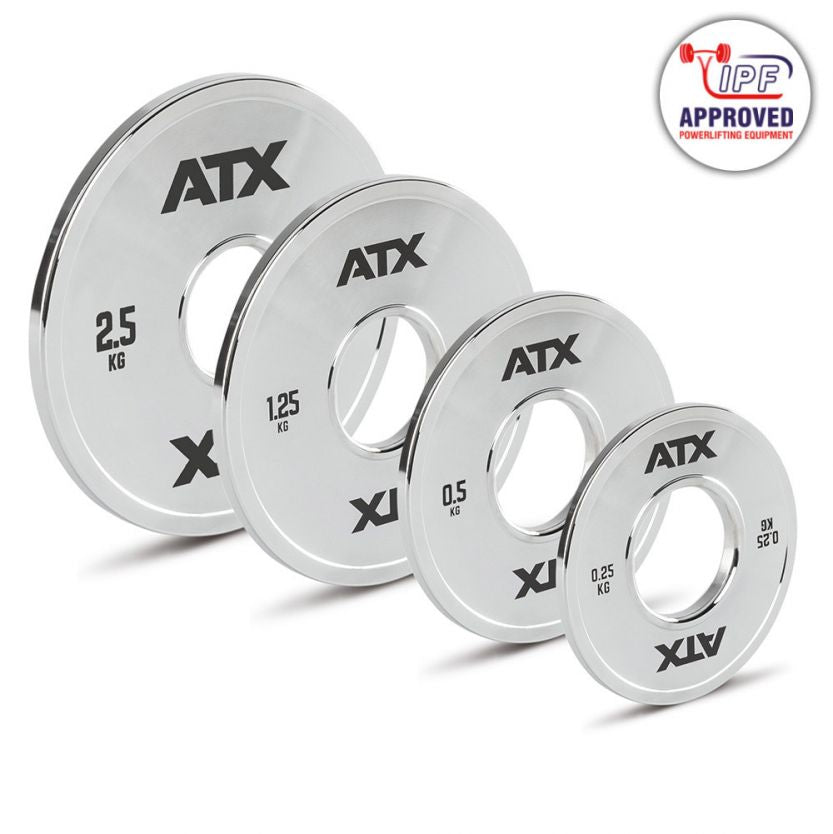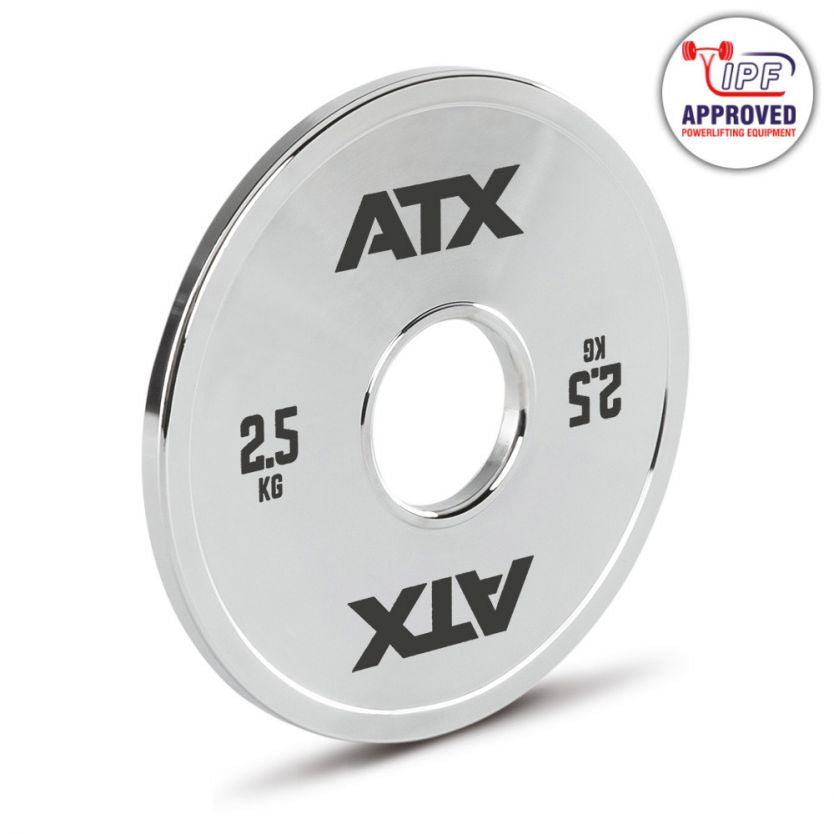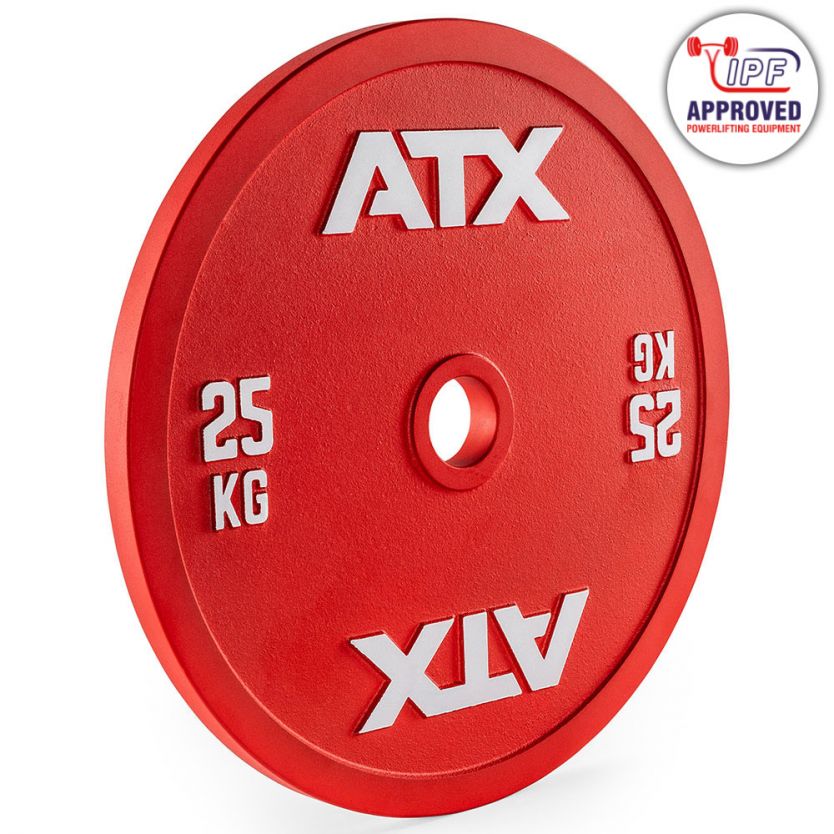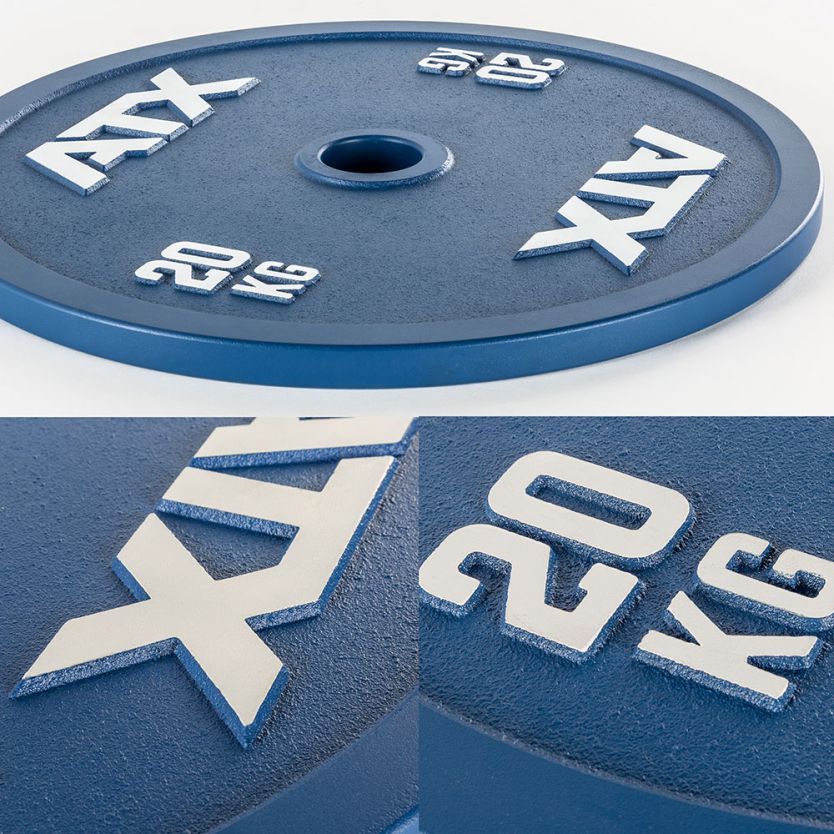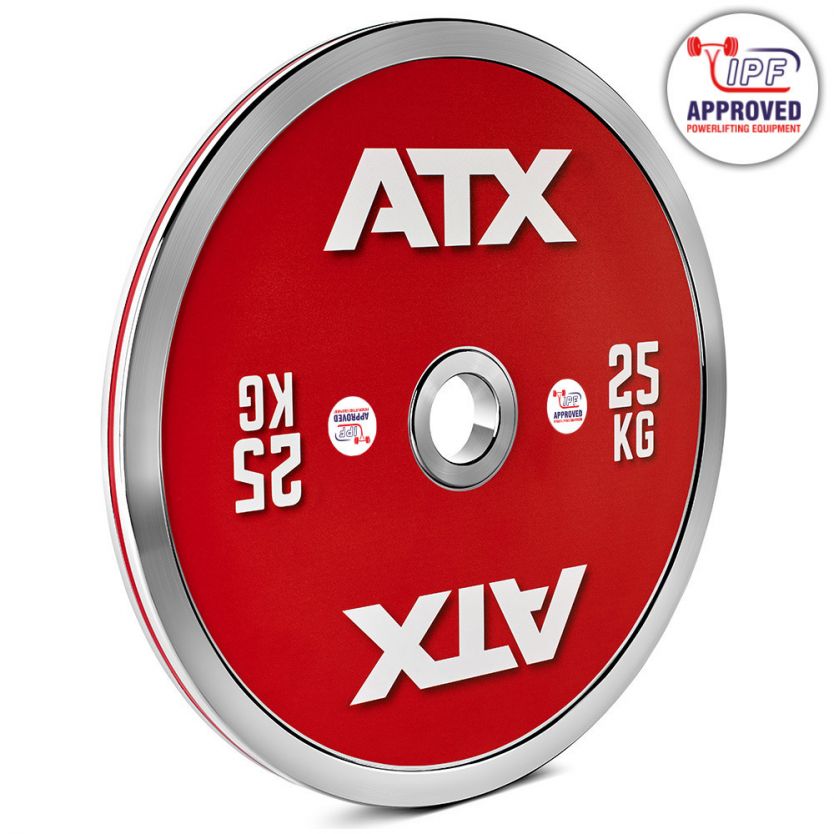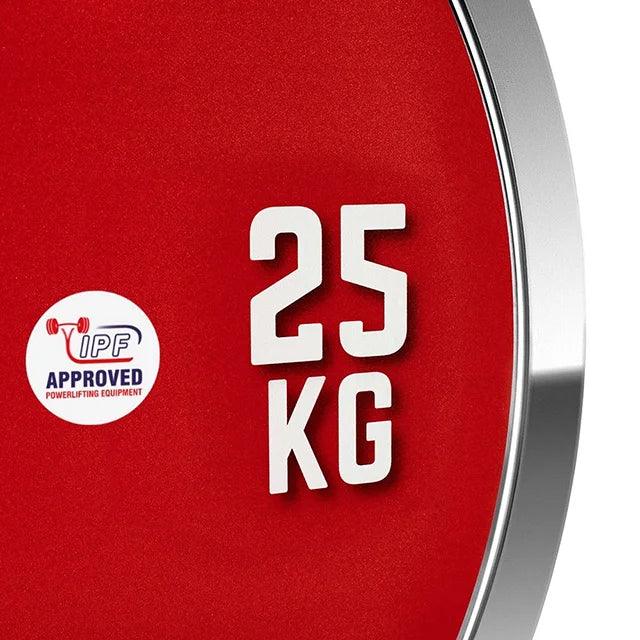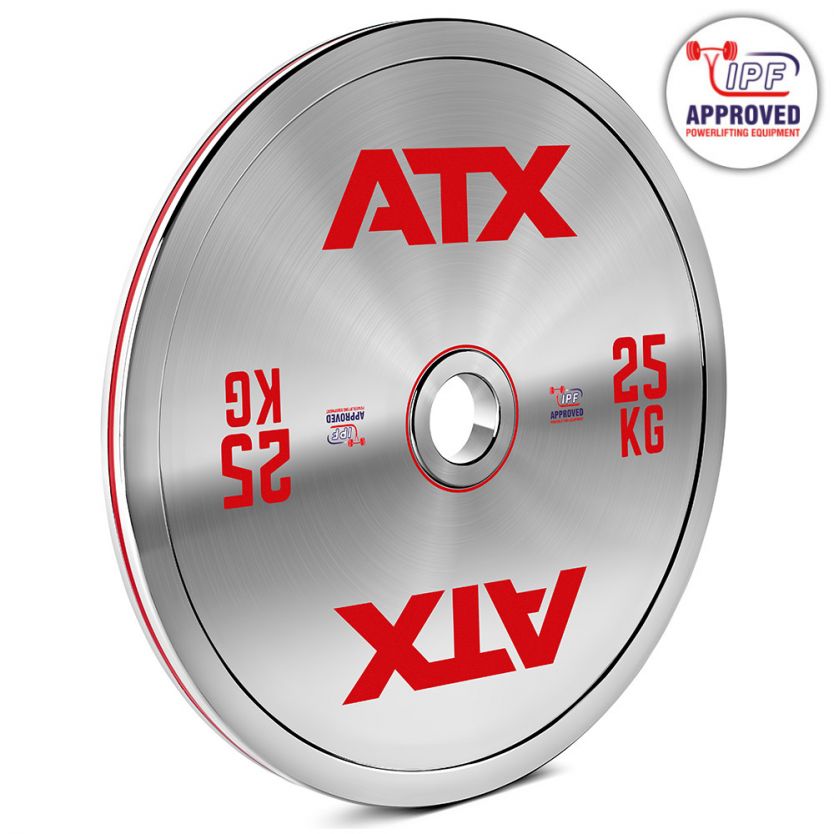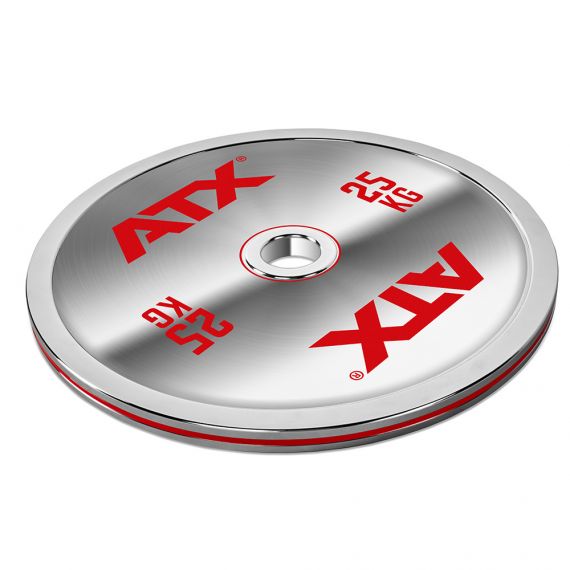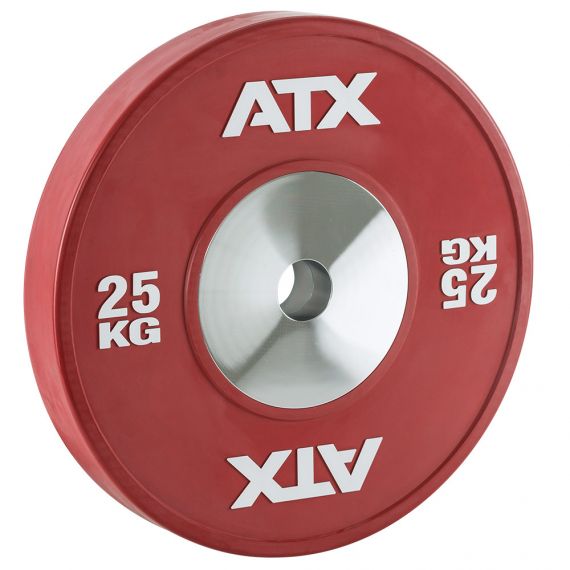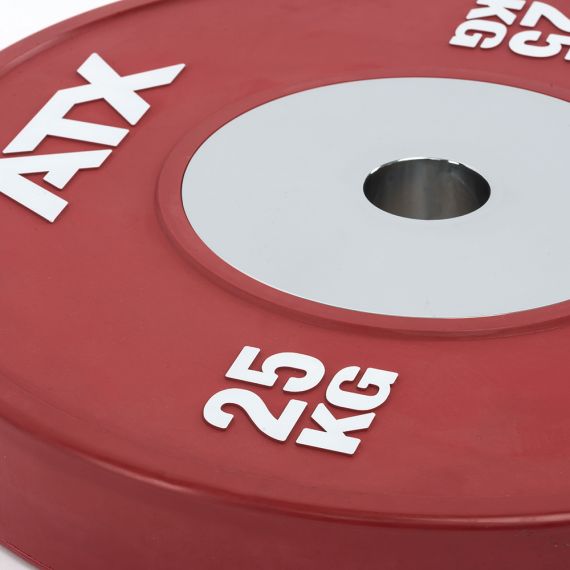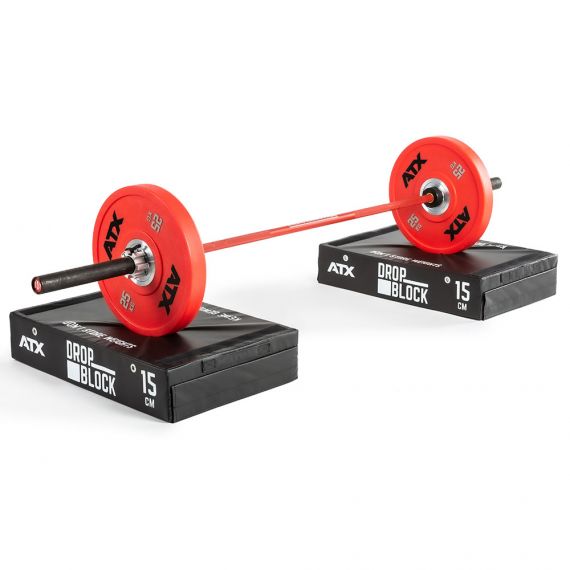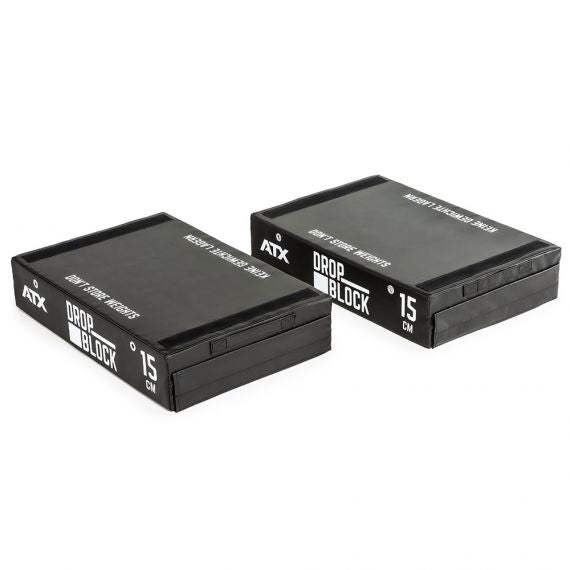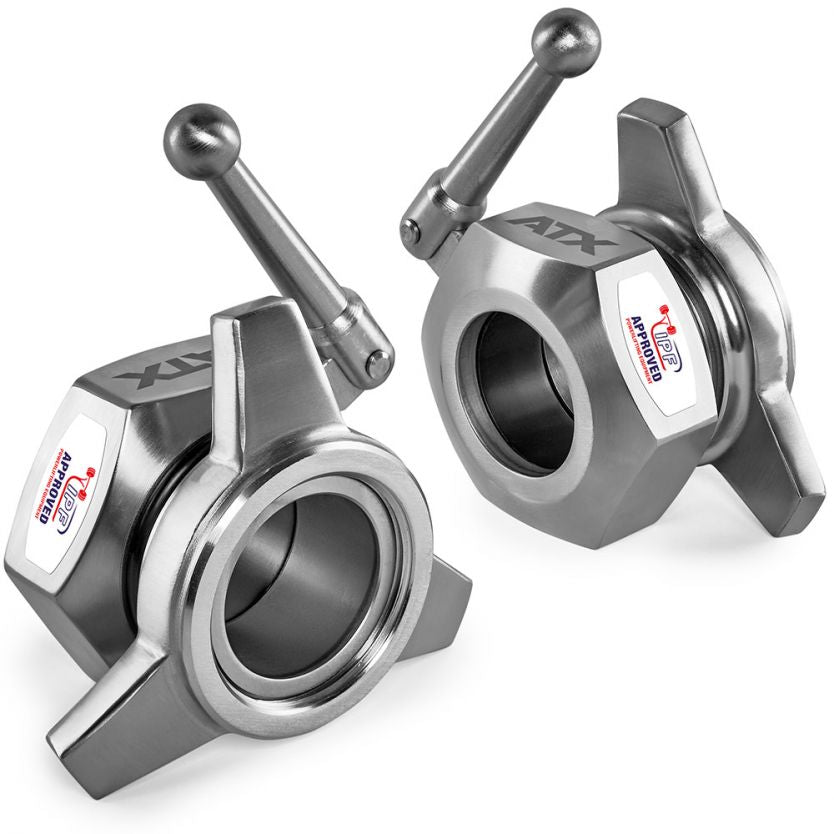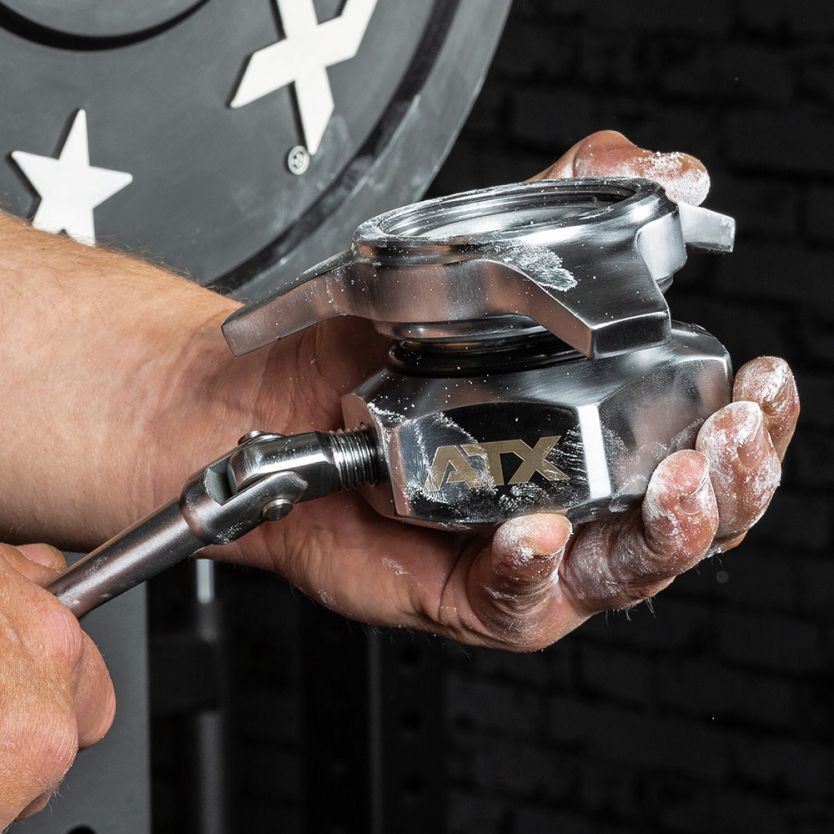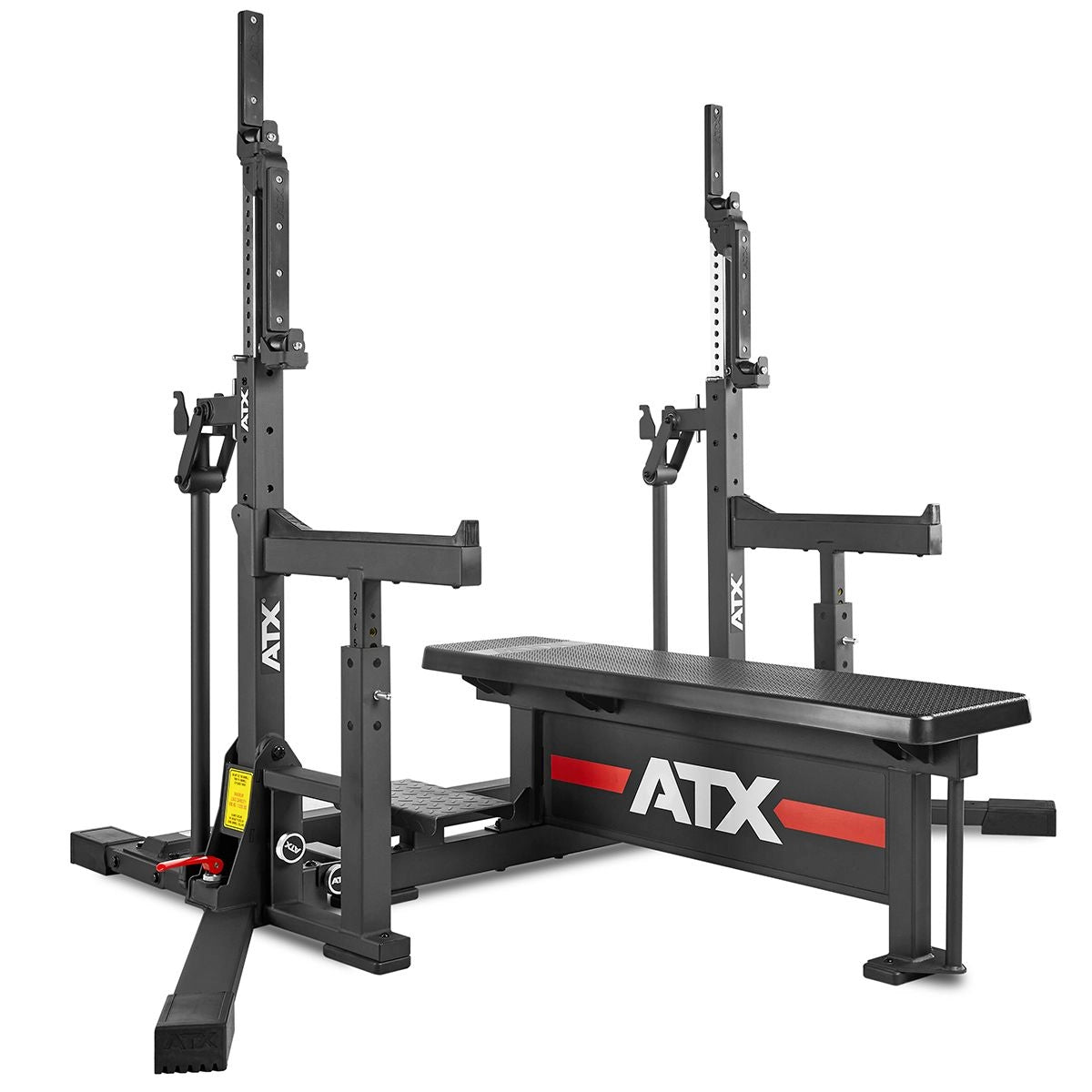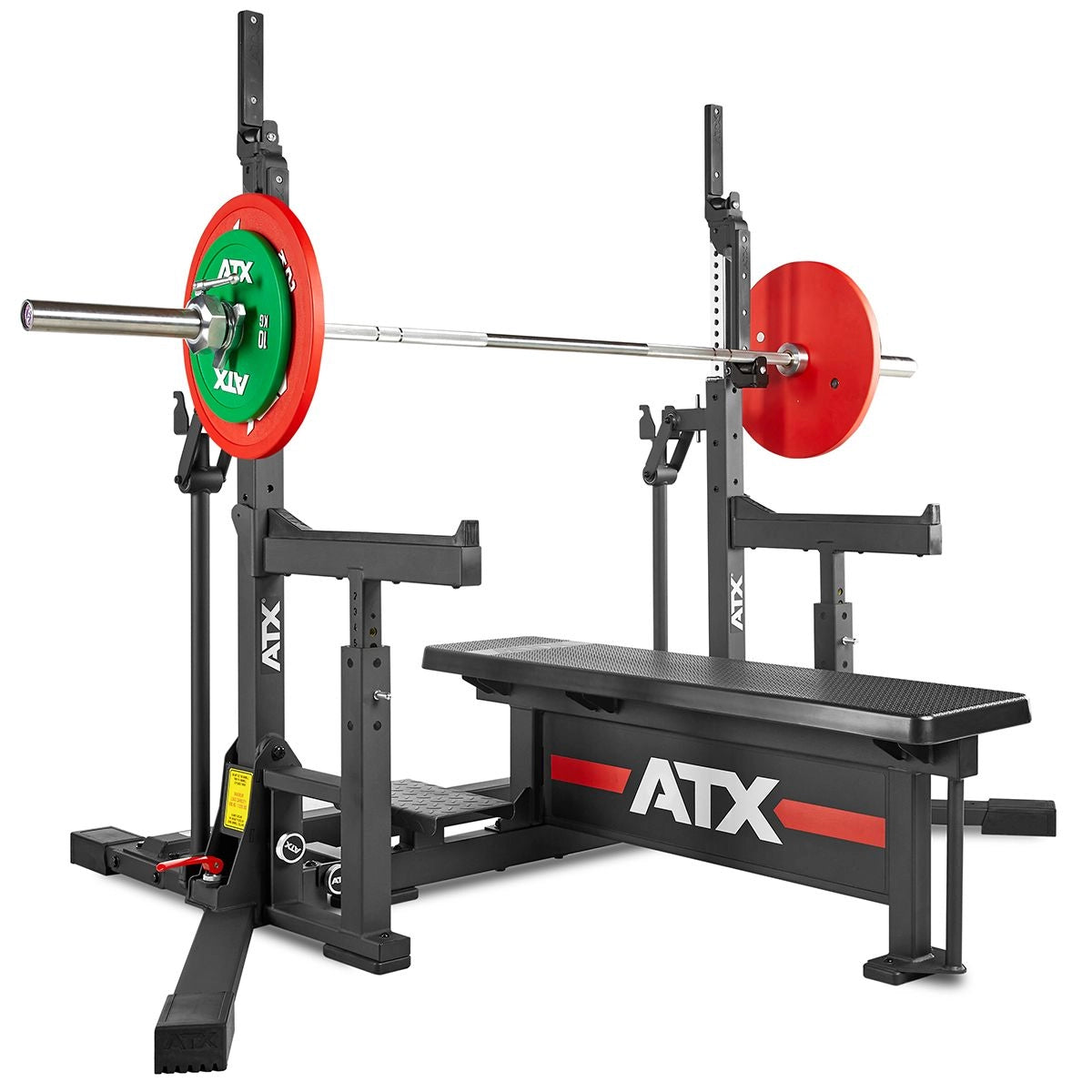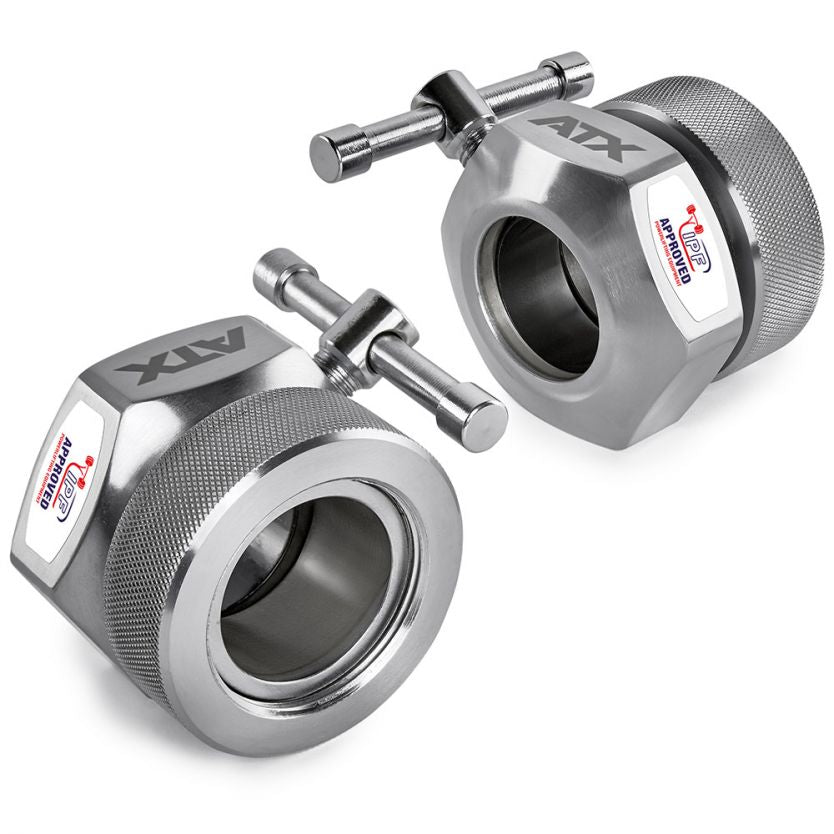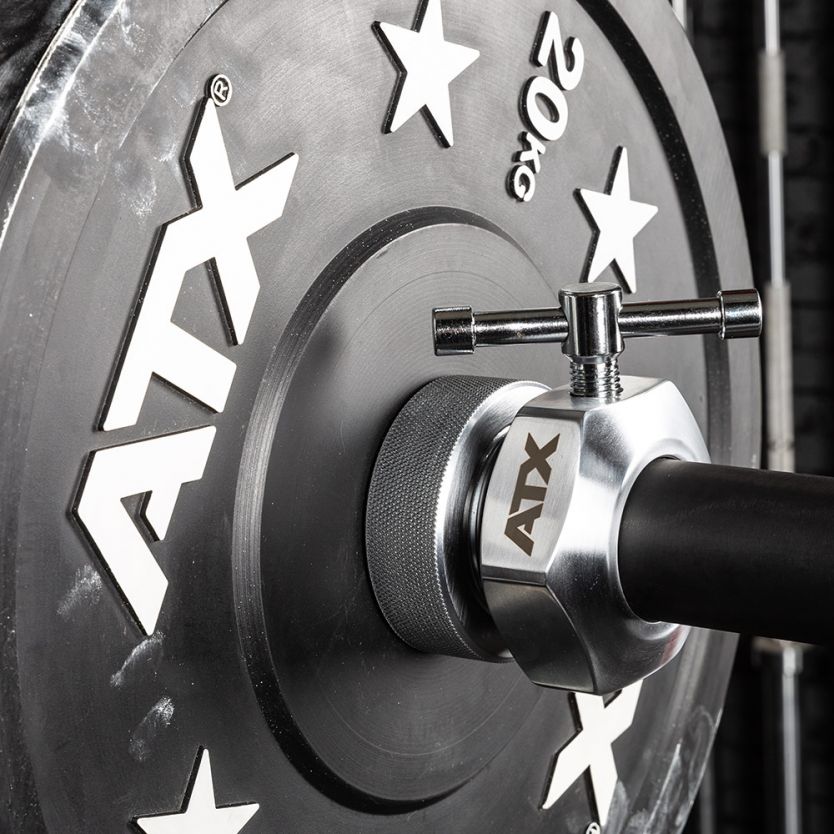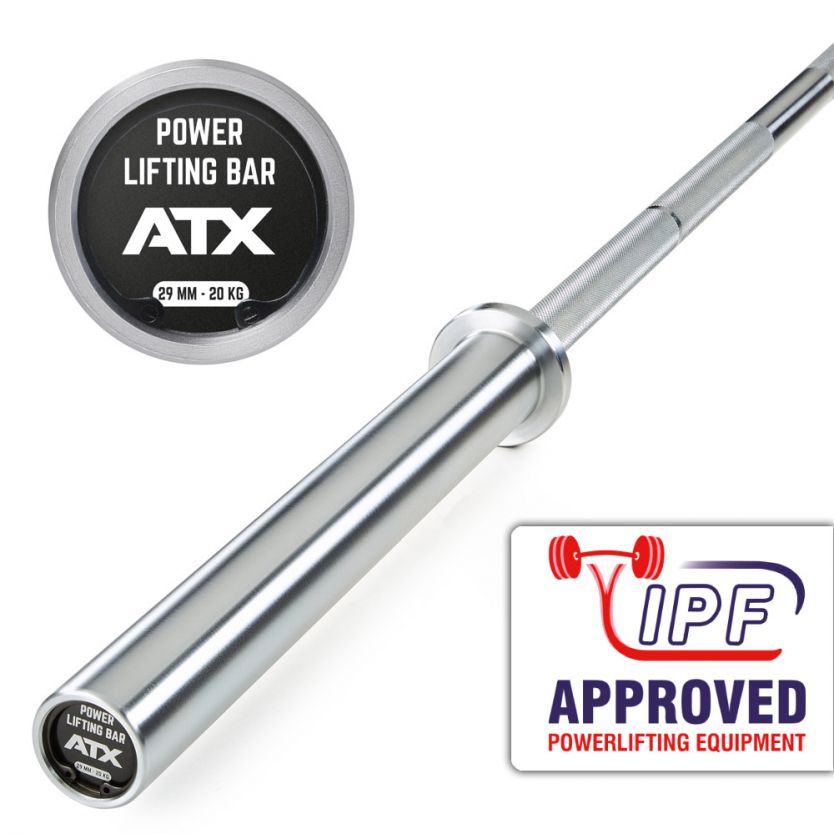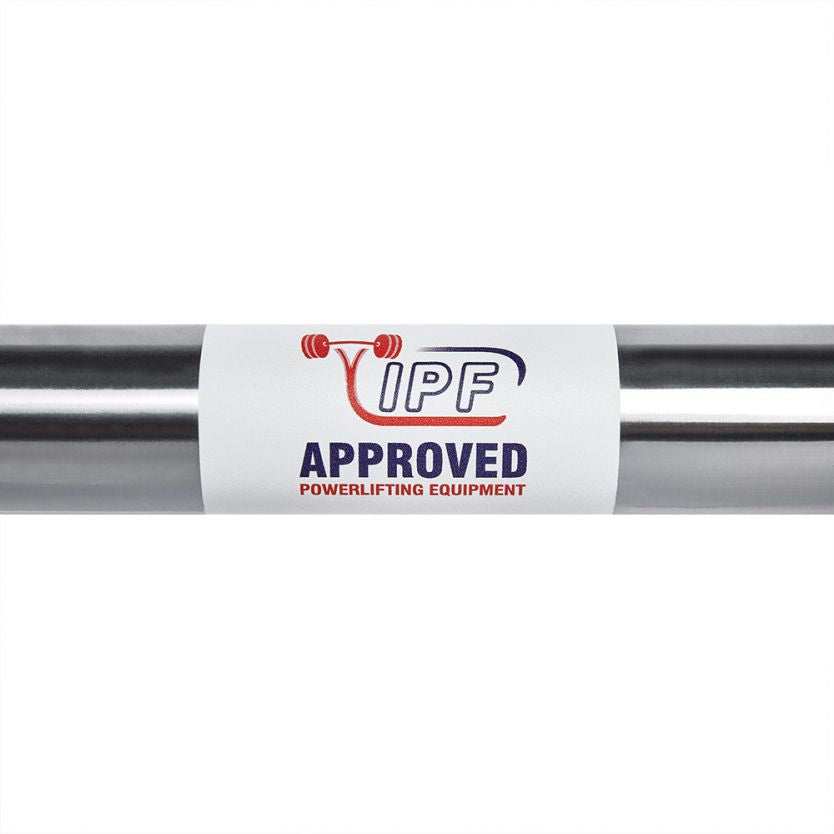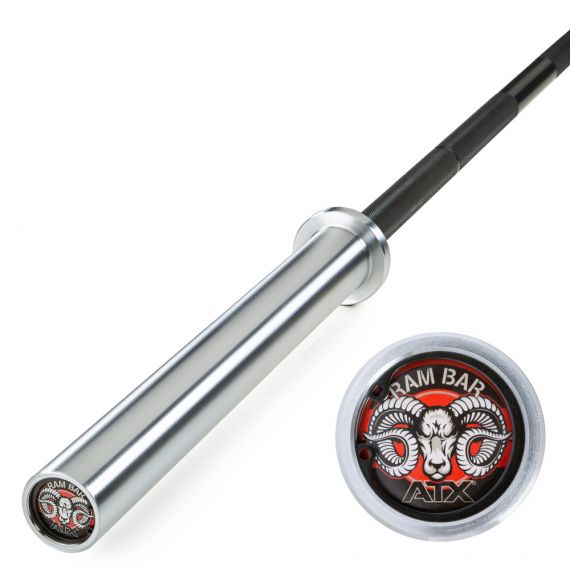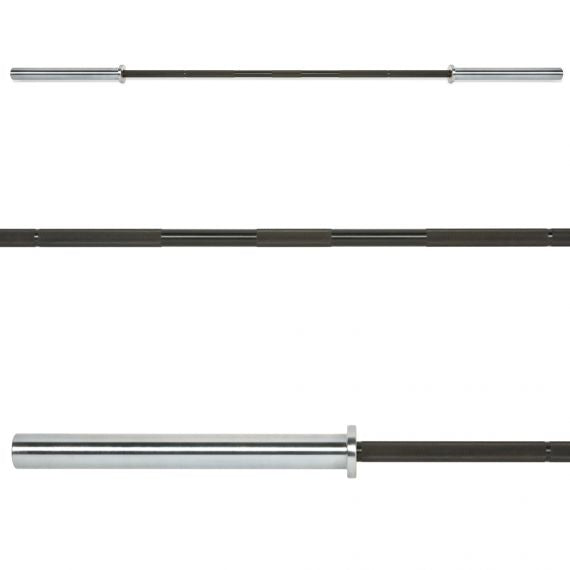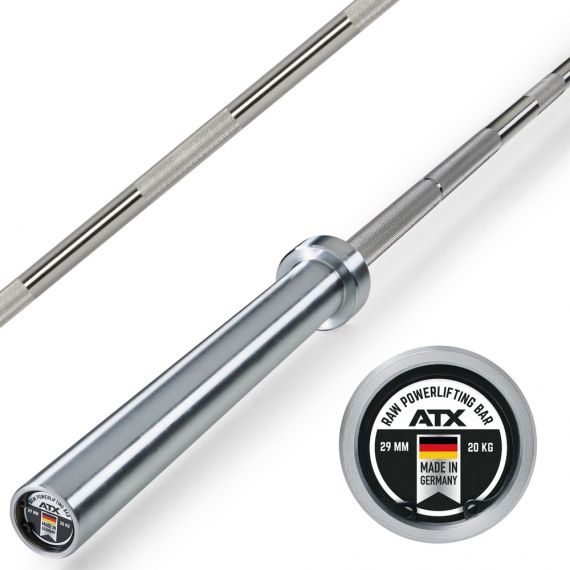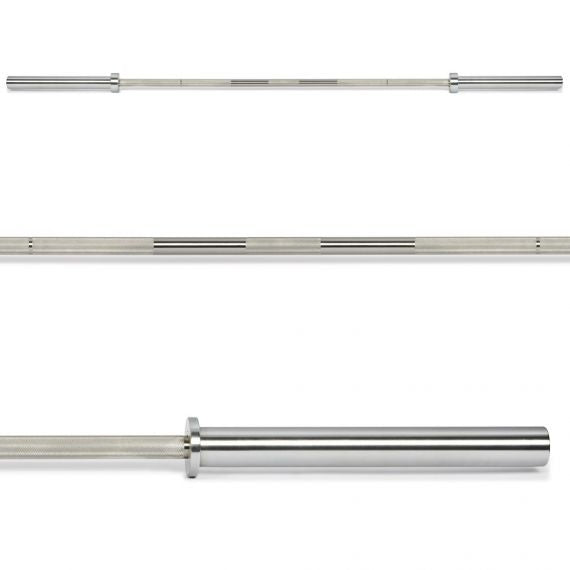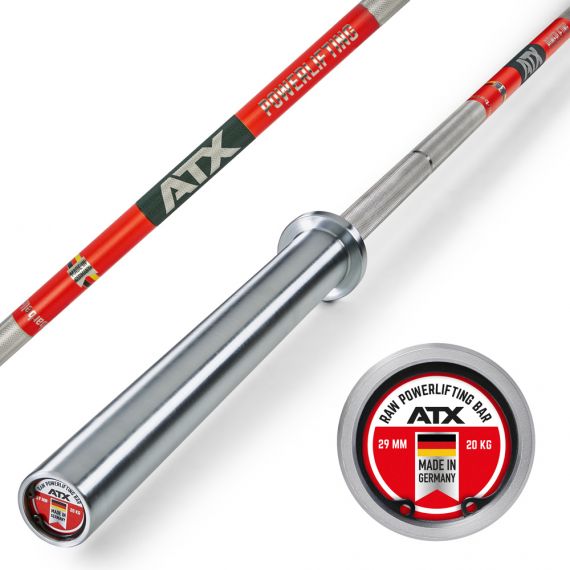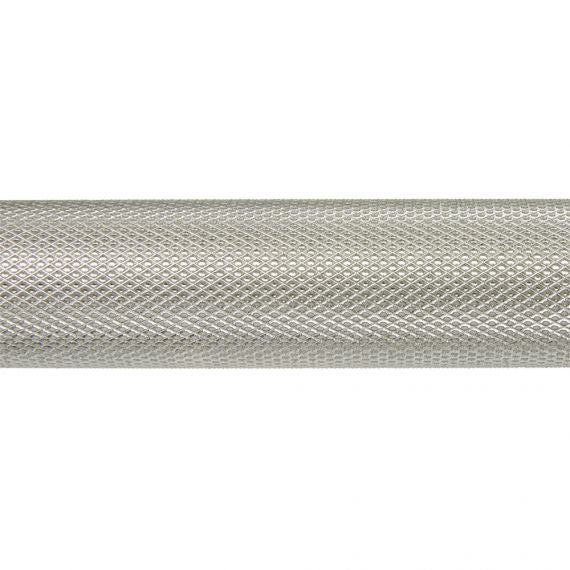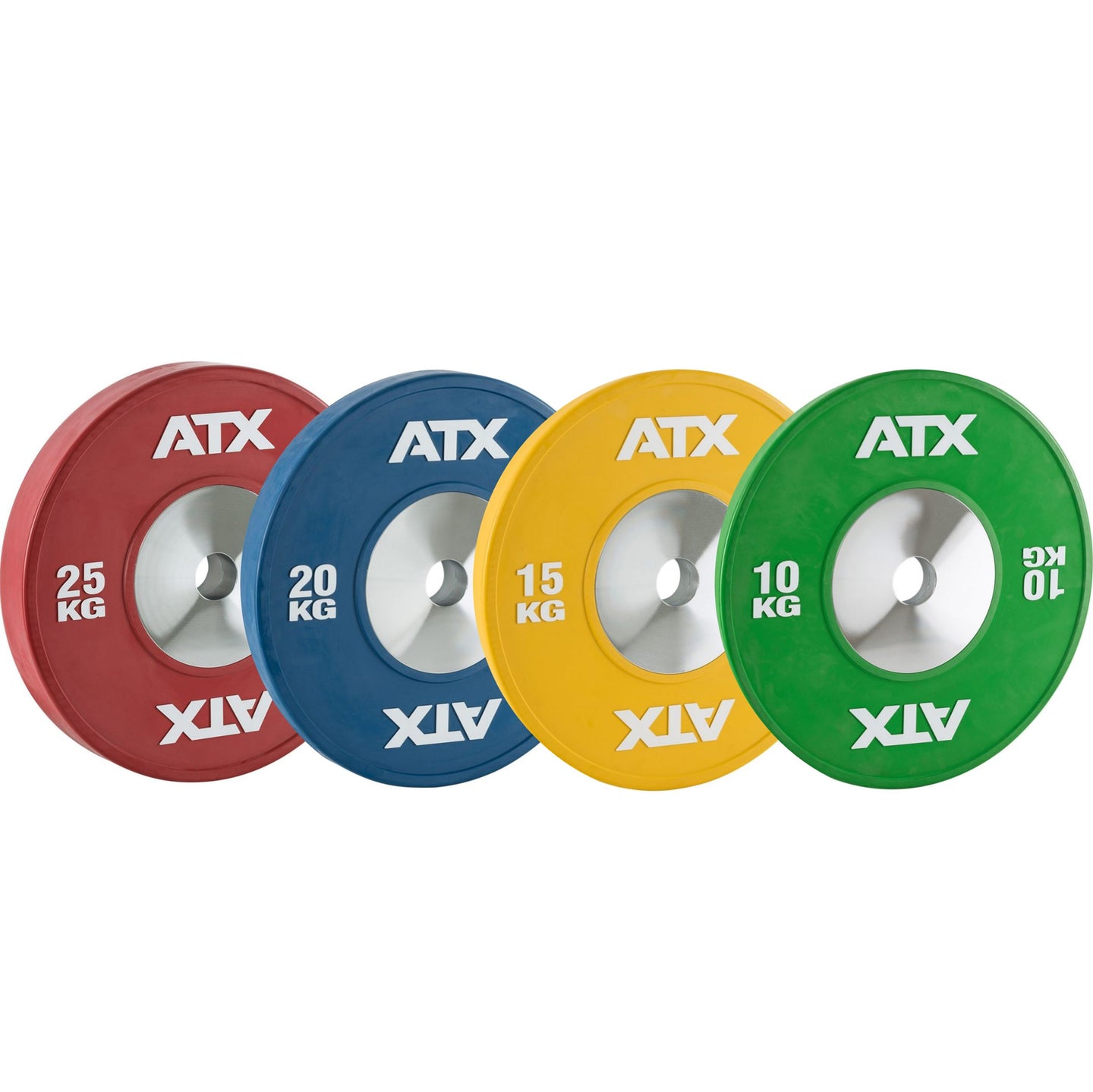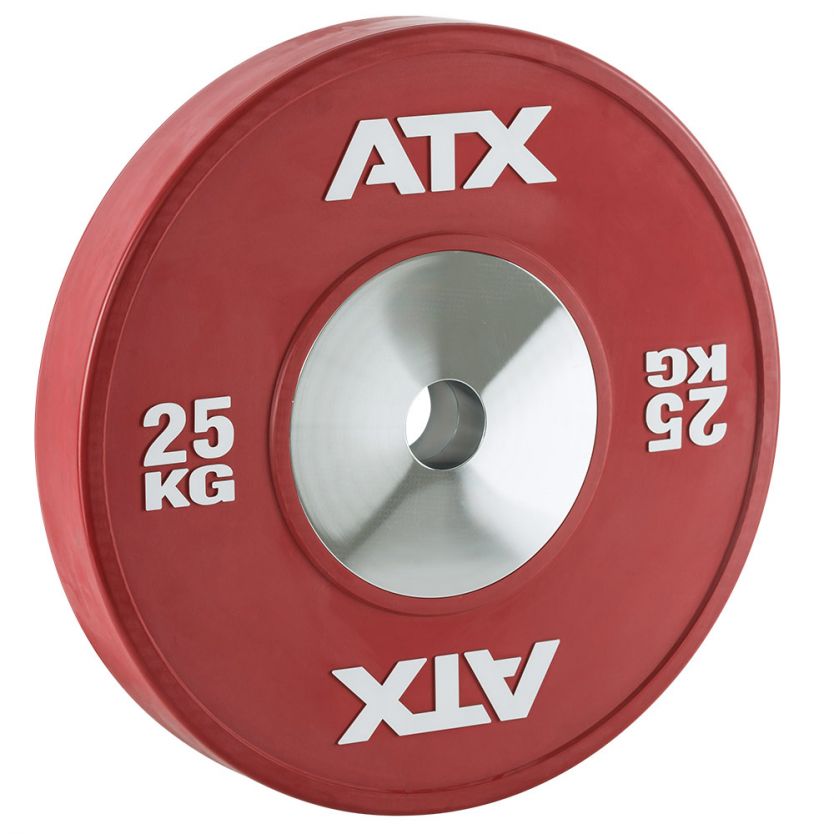Filters
-
ATX® Fractional Steel Plates 0.25 - 2.5 kg
Regular price From €12,00 -
ATX® Calibrated Steel Plate RL - 5 to 25 kg
Regular price From €27,90 -
ATX® Calibrated Steel Plates CC - 5 to 25 kg
Regular price From €44,00 -
ATX® Calibrated Steel Plates CS - 5 to 25 kg
Regular price From €44,00 -
ATX® HQ-Bumper Plates Weight Plates 50 mm - 10 to 25 kg
Regular price From €102,00 -
ATX® Soft Drop Blocks Height 15 cm – Pair
Regular price €249,00 -
ATX® Competition Closure IPF - Pair / 5 KG
Regular price €169,00 -
ATX® Combo Rack - IPF Approved
Regular price €1.899,00 -
ATX® Competition Collar IPF - Short - Pair / 5 KG
Regular price €169,00 -
ATX® Warrior Power Bar IPF - hard chrome plating
Regular price €399,00 -
ATX® Ram Bar II - Powerlifting Bar
Regular price €399,00 -
ATX® - XTP® Raw Powerlifting Bar - Type 200 - Made in Germany
Regular price €499,00 -
ATX® - XTP Powerlifting Bar – Type 400 - Made in Germany
Regular price €549,00 -
ATX® HQ Bumper Plates weight plates set – 140 kg
Sale price €1.099,00 Regular price€1.168,00
Ordering, delivery & care.
Can I get advice before purchasing?
Yes! Our team will be happy to assist you with your product selection – by phone, email, or in person at our showroom. Together, we'll find the right equipment for your training.
How quickly will the delivery take place?
We deliver quickly and reliably. You can find the exact delivery times directly on the respective product page or during checkout. We're happy to help with any questions about availability.
Will my device be delivered pre-assembled?
Many fitness equipment items are delivered partially assembled. Easy-to-follow assembly instructions are included. Many pieces of equipment can be assembled independently; for more complex items, we recommend a second person. If you require assembly service, please contact us.
How do I properly care for my fitness equipment?
Wipe down moving parts regularly, check screw connections for tightness, and ensure storage in a dry environment. For some devices, occasional lubrication is recommended—you can find information on this in the respective manual.
Not sure which product is right for your training goals? No problem! Our experienced team will take the time to talk to you – by phone (08142/448666), email, or visit our showroom. Together, we'll find the optimal solution for your needs.
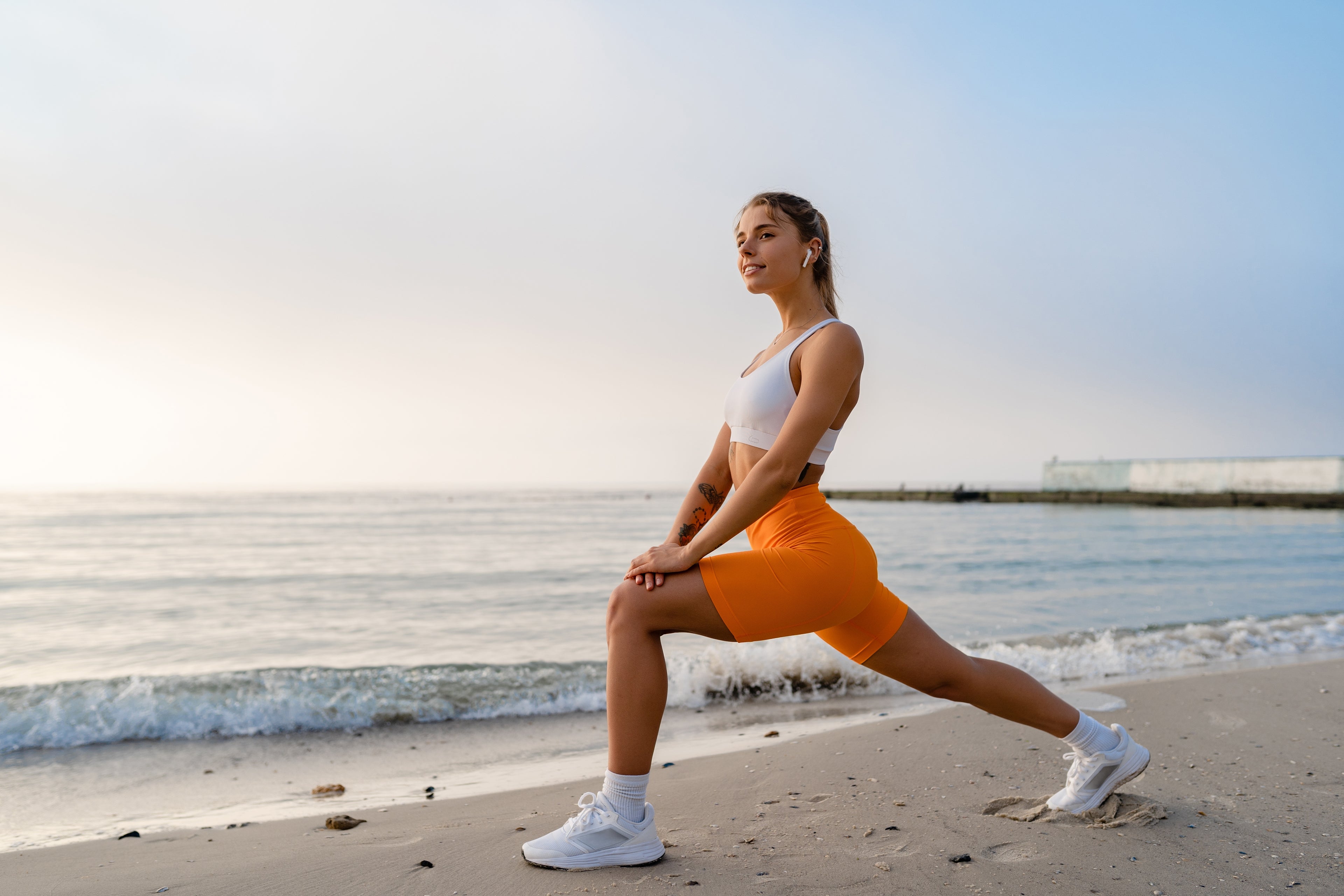
Powerlifting and Powerlifting - Maximum Strength and Performance
What is powerlifting?
Powerlifting is one of the most demanding strength sports and focuses on three essential exercises: the squat , bench press , and deadlift . The goal is to lift the maximum weight in these three disciplines. Unlike bodybuilding, which focuses on muscle definition and symmetry, powerlifting is about raw strength and progressively increasing maximum power.
Even if you're not deeply rooted in the strength training scene , you've almost certainly heard of the term powerlifting. But what exactly is powerlifting, and what are the benefits for the average strength athlete? This sport, which requires strength, technique, and endurance, has experienced a remarkable resurgence in recent years. In this article, we'll take a closer look at powerlifting , go through various exercises, and focus on how to best develop in this sport.
The powerlifting exercises
Powerlifters basically do strength training like everyone else in the gym, but with a special focus on certain exercises. While many fitness athletes perform a wide range of exercises, powerlifters concentrate specifically on improving their performance in the core disciplines of powerlifting. These specific exercises form the foundation of training and are designed to promote maximum strength development . In powerlifting, three basic exercises are performed, known as the "Big Three": squats, bench presses, and deadlifts . These exercises are explained in detail below, along with their correct execution in the powerlifting context.
Squats
Squats are one of the core exercises in powerlifting and primarily target the leg muscles, lower back, and core muscles. Precise technique is essential to prevent injuries and maximize performance. The following key factors should be considered:
✦ Posture : A stable stance is essential—feet shoulder-width apart, back straight, and gaze forward. Correct posture is the foundation for a clean and effective squat.
✦ Depth : The squat should be performed deep enough so that the thighs are at least parallel to the floor or lower. This ensures optimal muscle activation. Adequate mobility is crucial. If the required depth is not achieved, targeted mobility training can help.
✦ Breathing : Hold your breath during the downward movement and exhale only at the top. Controlled breathing supports stability and prevents unnecessary tension.
✦ Stability : A powerlifting belt can help improve core stability and provide core support.
Bench press
The bench press is an effective compound exercise that primarily targets the chest muscles, shoulders, and triceps. Precise technique is crucial to optimizing performance. The following tips will help you improve your bench press technique and specifically increase strength development.
✦ Bench Position : Lie flat on the bench with your feet firmly on the floor. Your eyes should be below the bar to ensure the optimal angle for the movement.
✦ Grip : The grip should be slightly wider than shoulder-width apart. A narrower grip will activate the triceps more, while a wider grip will target the chest muscles more.
✦ Lowering the bar : Lower the bar to your chest in a controlled manner, keeping a slight bend in your elbows. The bar should touch your chest or hover just above it. Always keep the weight under control and don't simply let it drop—a controlled lowering promotes muscle growth.
✦ Push the bar upwards : Push the bar upwards smoothly and with control, without hyperextending your elbows. Exhale during this movement and avoid forced breathing.
Deadlift
The deadlift is considered one of the most demanding and effective full-body exercises and is often referred to as the "supreme discipline" in strength training. Despite its high effectiveness, the exercise requires precision and technique for correct execution. The following key factors are particularly important to consider:
✦ Grip : There are several different grip variations for deadlifts, including the conventional grip and the sumo grip. The choice should suit your individual anatomy and feel stable.
✦ Posture : Start with your back straight and slightly arched. Push your hips back while keeping your knees bent to ensure optimal starting position.
✦ Lifting the load : Use leg and hip power to pull the bar upward in a controlled manner. Keep the bar close to your body to minimize strain on your lower back.
✦ Completion of the movement : Stretch hips and knees simultaneously until an upright position is reached.
Powerlifting training plans
An effective powerlifting training plan is essential for building strength and achieving long-term progress. There are various strategies that can be tailored to your individual training level:
1. Linear progression: Especially suitable for beginners , as the weights are increased in small, steady increments. This allows for continuous strength improvement without overloading.
2. Block periodization: This method divides training into specific phases, alternating between volume, strength, and technique. This ensures optimal performance development over a longer period of time.
3. Westside Barbell Method: An advanced training system based on maximum speed and heavy lifts. Regular variations of core exercises are used to avoid plateaus and target weak points.
4. Cyclical deload phases: Regeneration is essential in powerlifting. Planned deload weeks with reduced intensity allow the body to recover and prepare for the next exercise.
Why powerlifting? The benefits at a glance
Powerlifting offers a variety of benefits that go beyond just building muscle:
I. Maximum strength development: Through targeted training with high weights and low repetitions you build massive strength.
II. Functional strength: The basic exercises in powerlifting strengthen the entire body and are directly transferable to other sports.
III. Improved bone density: Training with heavy weights helps increase bone density and can prevent osteoporosis.
IV. Increase mental strength: Powerlifting requires discipline, focus and mental toughness , which are also beneficial in other areas of life.
V. Hormonal Benefits: Heavy weight training promotes testosterone and growth hormone production , which has a positive effect on muscle growth and fat burning.
General tips for powerlifting training
I. Progressive overload: To achieve progress, it is crucial to continuously increase the weight. This promotes both muscle building and strength gains. In addition to increasing the weight, training volume or intensity can also be adjusted to achieve further progress.
II. Nutrition: A balanced diet is essential to meet energy needs and provide sufficient protein for muscle recovery. This supports long-term muscle growth and regeneration.
III. Recovery: Adequate recovery phases are essential. Sleep and rest periods play a key role in optimizing performance and muscle regeneration.
IV. Technique: Proper technique is key to better training results and reduces the risk of injury. Invest time in improving your form to train more efficiently and safely in the long run.
V. Mental Strength: Powerlifting requires a strong mental attitude and concentration. Visualize your successes and stay focused to achieve the best results.
VI. An important aspect in powerlifting is grip strength , which should not be neglected under any circumstances. The hands are crucial for transferring force from the body to the barbell. Grip strength is often the limiting factor, especially in pulling exercises, since the forearms represent a smaller muscle group than, for example, the back muscles.
Powerlifting Equipment: What Do You Need?
To optimize your powerlifting training, the right equipment is essential. Here are the most important products:
✦ Powerlifting barbells and plates: Robust barbells with high maximum weight and rubber or iron weight plates for safe training.
✦ Squat Rack / Power Rack: Essential for safe squats and bench presses, especially with maximum weights.
✦ Weightlifting belt: Supports the lower back and stabilizes the torso during heavy lifts.
✦ Knee and wrist supports: Protect the joints and provide additional stability.
✦ Powerlifting shoes: Flat soles for optimal ground contact and better power transfer.
FAQ and conclusion on powerlifting
Is powerlifting dangerous?
When performed correctly, powerlifting is no more dangerous than other sports. Proper technique, safe equipment, and progressively increasing the weight minimize the risk of injury.
Do I have to follow a specific diet?
Yes! A protein-rich diet with sufficient calories is essential to promote muscle growth and recovery.
Can I combine powerlifting with other sports?
Definitely! Powerlifting improves overall athleticism and strength, which can have a positive impact on sports like soccer, martial arts, or track and field.
In conclusion, powerlifting is a fascinating sport that requires both physical and mental strength. Proper technique in the basic exercises—squats, bench presses, and deadlifts—is crucial for success and injury prevention. With consistent training, good nutrition, and the right mindset, you can make significant progress in powerlifting. Good luck on your journey to maximum strength!

